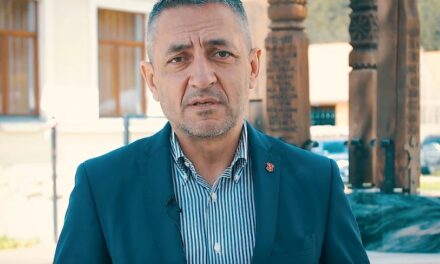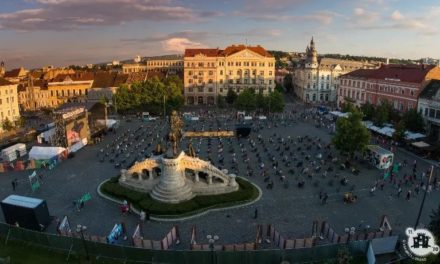Komárom would be demoted, and the areas inhabited by Hungarians would be subdivided according to the new Slovak public administration concept. Technocratic arrangement or chauvinist move? It is certain that the Hungarians will not be helped by the new plans.
Slovakia, or Czechoslovakia, as it was called before the Great Separation, has gone through and survived quite a few state administration reforms, not to mention the scandalous reforms of the Roman Catholic dioceses in 1977 and 2008, which clearly aimed at the "vertical" fragmentation of the Hungarian countryside. Politician Péter Őry, president of the Pro Civis Civic Association, expert on public administration reforms, responded to our newspaper's question as follows:
„As much reorganization as there was in this country, it always adversely affected Hungarians".Slovakia has typically ignored international commitments and framework agreements that it also signed, prohibiting the breakdown of minority proportions.
Such was the state administration reform implemented between 1996 and 2000, the definition of districts and districts. It was apparently possible to create small districts in the non-Slovak territories, but none of the Hungarian districts abolished in 1960 were re-established.
The Slovak-inhabited Selmecbány district, for example, can operate with 16,600 people, but in the Galánta region, twice as many Hungarians could not have their own district.
In many places, settlements were cut off and classified into districts with a mixed population,typically referring to budgetary reasons, obviously not regardless of the fact that the divided Hungarians are more easily consumed by assimilation: this was the case with the settlements sent to Szenci, Galántai, Vágsellye and other districts. The districts were created along the borders of the districts, based on a similar logic - just look at the map.
And now a new administrative reform leaked from the interior is stirring up the mood. The detailed material about it reached the Hungarian-language editorial office of the Denník N daily, Napunk, but not the Csallóközi Association of Villages and Cities, and the paper presents the developments and plans in a neutral-positive tone.
According to the document, the "reform" would continue the previous logic with mergers and reclassifications. For example, the district of Komárom would cease to exist, and the larger district of Érsekújvár would be created, i.e. the city with a Hungarian majority would be demoted,
and Somorja, which also has a Hungarian majority, would be attached to the Bratislava district. The districts would also be redrawn, so there would be even less chance of winning a county seat in Nagyszombat than before. It also turned out that the interior has been working on the plan since 2021, to the exclusion of the public and those involved. The main reason is that the reforms that took place until 2000 were not finished fairly, and there are also legitimate criticisms of Vladimír Mečiar's direction.
According to Péter Őry, the concept already shows that it is about splitting up Hungarian-inhabited neighborhoods and regions.He emphasizes: it cannot be a coincidence that the district of Dunaszerdahely, which has a traditionally Hungarian majority, is classified as Felső-Csallóköz in the Bratislava district and the Galánta area in the Nagyszombati district. As a result of the reform, the number of Hungarian representatives would noticeably decrease. If the transformation also involves the amalgamation of settlements, the further consequence could be the loss of tens, or rather hundreds, of mayoral seats. "They are subtly reducing the use of the Hungarian language and Hungarian-language education. As our advocacy weakens, all cultural institutions, theaters and museums would go into the soup, he lists. "Moreover, the idea does not reflect the real state of the natural regions."
"There is no heated, loud anti-Hungarian hostility, instead, like in water polo, there are subterranean, insidious kicks"- expresses Péter Őry. Igor Matovič's government was no exception to this, just think of his attitude towards dual citizenship.
Both of our speakers agree on that: since the disintegrated Slovak government has months to go, the concept is stuck at the draft level for the time being. Of course, there is no guarantee that it will remain this way, according to Géza Tokár, if the next government feels it is its own, it can carry it through. According to Péter Őry, it is even more dangerous that it would be carried out under the grass, bypassing everyone, which warns of the movement of forces that are constantly working to suppress Hungarians. According to the politician, there is one answer to this: to formulate the own needs of the Hungarians in the highlands, that is, a self-administration concept at the regional level.
Civilians Info: The problem with the peaceful resolution of the Trianon is that in the meantime, they are stealthily eliminating the possibilities of block Hungarians to cultivate their own identity. It is typical of the "hurrah optimism - primarily on the part of the left, which was never interested in the national destiny - that accompanied our entry into the EU and still accompanies Trianon today. According to the left's own admission, it is only interested in the 93,000 square kilometers where the citizens of the republic live, as they like to call the Hungarian people living in Belhon! With our entry into the European Union and the Schengen zone, they intend to forget the Trianon tragedy once and for all. After all, the permeability of borders, the free movement of capital and labor will also solve nationality issues. Let only them be Slovaks, Romanians, Serbs, Croatians, Slovenians and Austrians in the long run. How much it hurts the left, since in their genesis they thoroughly prepared the mutilation of the homeland. They don't think differently today either.
However, it hurts us. (Compare: Gyula Trianon-Illyés Gyula Trianon-Illyés is a Hungarian) To stand by our brothers and provide all material, spiritual and organizational help for their survival. Because it is our duty to preserve the country of St. István, wherever the state borders are. This is a solid point in today's fashionable and runaway relativism-dumping. Against the concepts of globalism and federated Europe, only the historical nation can stand, preserving its language, culture, traditions and faith.
Hey, how can that be even in minority conditions? It can't be, it seems! The unified, one-language nation-state aspirations - one language, one country - system always emerges by force or under me. As a reminder, let me quote that a number of minority rights could be realized in the Kingdom of Hungary. The Eötvös nationality law of 1868 was the most progressive in the entire world. However, all this well-intentioned national liberal effort was exploited by neighboring states ready to jump and turned against us at a tragic moment.
The Carpathian Basin is a historical space where only the full and complete granting of nationality rights, the extension and mutual recognition of functioning autonomies, and the ensuring of the survival and development of the Hungarian minority on the part of the successor states can be the only viable path and not dissolution in globalism, cancellation or melting of national marks. By the way, the war in Ukraine clearly shows the consequences of intolerance, unfortunately we can see this in Transcarpathia as well.
We hope that the Hungarian national government will always stand up for Hungarians across the border until it achieves its goal. Trianon cannot be surpassed, and further expansion of sums or open must be prevented at all costs!
Source and full article: Mandiner
Featured image: Shutterstock











